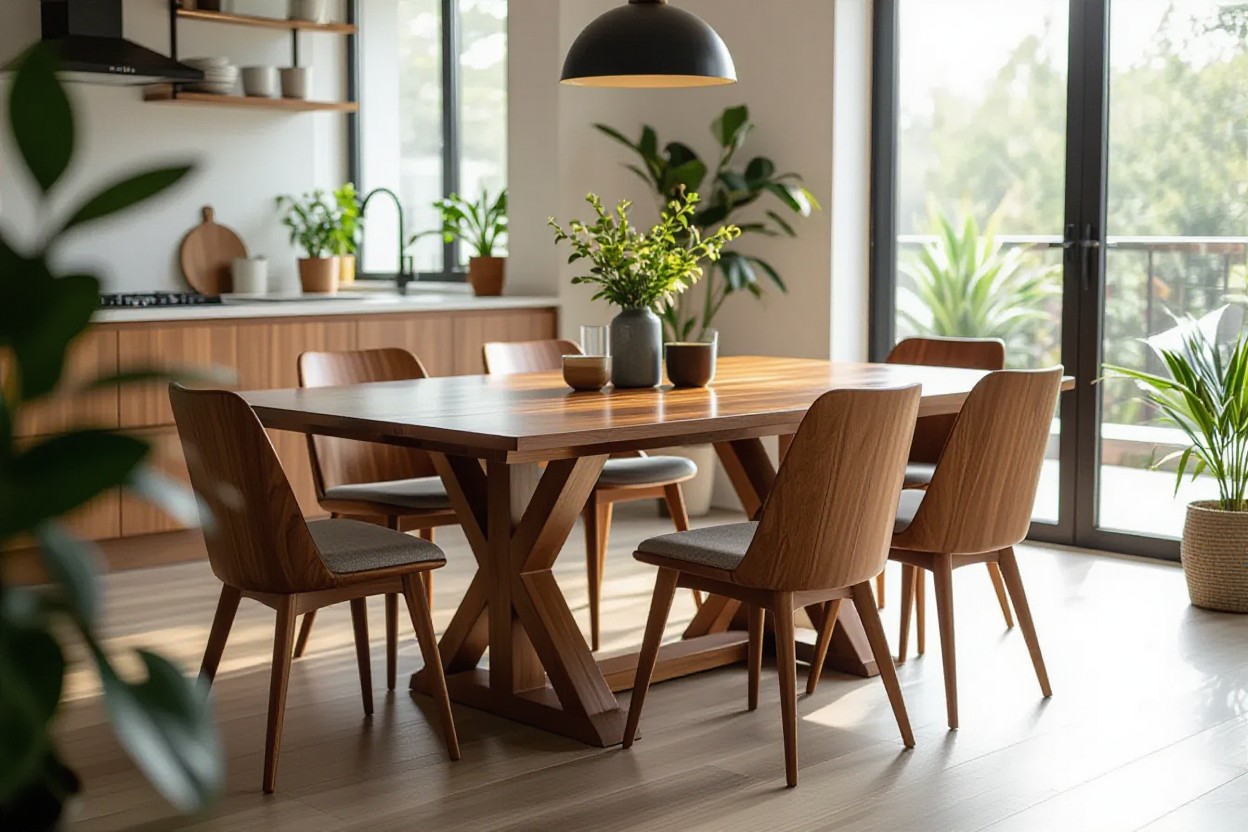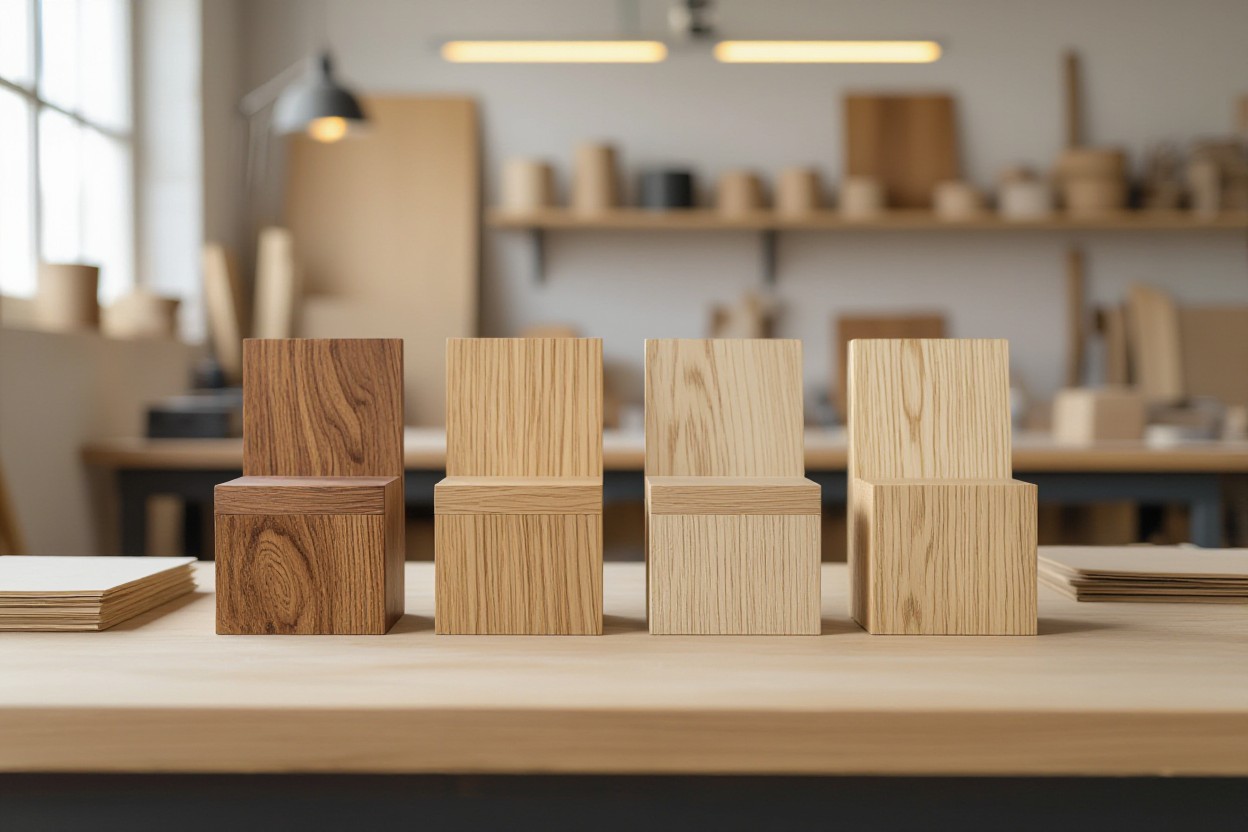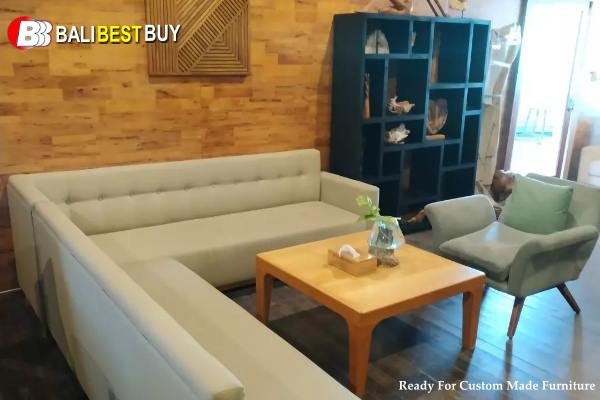Furniture Bali made from rubberwood gives you a sustainable, durable, and versatile foundation for your custom pieces; its fine grain and light tone accept stains and paints easily, offering design flexibility and hardwood looks at a lower cost, while consistent availability lets you plan ambitious projects with confidence and expert craftsmanship.

The Untapped Potential of Rubberwood
Beyond cost and sustainability, rubberwood brings practical advantages that directly benefit your custom project timeline and budget. Harvested after the rubber tree’s 25–30 year latex cycle, this byproduct material arrives at the mill with consistent dimensions and grain, reducing the need for extensive sorting; that consistency helps you avoid delays and variability when you order sets or matching pieces. Kiln-dried to a stable 6–8% moisture content, rubberwood holds up well in indoor environments, meaning your cabinets, dining tables, or bespoke shelving are far less likely to warp or twist over time.
Your workshop will also generate less waste with rubberwood because of its straight grain and predictable machining behavior. That translates into cleaner joinery, tighter tolerances, and smoother finishes—advantages you notice in the fit of drawers, the alignment of doors, and the overall longevity of custom pieces designed to withstand everyday use.
Unique Properties: Strength and Resilience
Rubberwood’s fine grain conceals a surprisingly robust structure: it offers good bending strength and impact resistance, making it an excellent choice for high-traffic furniture like dining chairs, benches, and family room coffee tables. Fasteners and modern adhesives perform reliably in rubberwood; screws bite well and glued joints hold without excessive reinforcement, so you can specify delicate details or slender legs without compromising durability.
Expect practical performance under real-world conditions—families, rental properties, and hospitality settings benefit from rubberwood’s resilience. If you commission a large tabletop or multi-drawer unit, the material’s stability after proper drying means fewer callbacks for refinishing or adjustment, and a lower lifecycle cost compared with softer, less predictable species.
Aesthetic Flexibility: Color and Grain Variability
The pale, creamy base of rubberwood is a designer’s advantage: it accepts stains to approximate oak, maple, or even darker walnut tones while also taking paint exceptionally well for contemporary, color-driven projects. You can achieve a consistent mid-century light finish or a deep, hand-rubbed hue by using dye-based stains followed by two to three protective topcoats, giving you both the look you want and a durable surface suitable for daily use.
Small variations—subtle mineral streaks or occasional fine knots—add character without disrupting visual continuity, and because the wood is light, matching finishes across multiple pieces is simpler than with naturally dark or heavily figured species. That predictability lets you plan cohesive living-room sets or custom bedroom suites where grain flow and color uniformity matter.
For optimal results you should request sample boards or mockups before finalizing a finish: water-based stains and a good sealer reduce blotching, while a spray-applied lacquer or polyurethane topcoat (two to three coats) protects against wear. At Bali Best Buy you can review 5–7 finish samples or commission a small prototype so you see exactly how your chosen stain, paint, and topcoat interact with rubberwood’s grain before production begins.
Environmental Benefits: Why Rubberwood is the Eco-Conscious Choice
You benefit from a material that closes the loop between agricultural production and manufacturing: rubberwood comes from trees that have already served a purpose in latex production, so harvesting them for timber avoids the waste associated with clearing old plantations.
Rubber trees typically begin yielding latex around year six or seven and remain productive for roughly 25–30 years; after that lifecycle you get a high-quality hardwood that would otherwise be burned or left to decompose. Choosing rubberwood helps reduce pressure on primary tropical forests, since plantation-sourced timber displaces demand for slow-growing, old-growth species.
Markets that embrace rubberwood also create measurable local advantages: smallholder growers in Indonesia, Thailand and Malaysia can earn additional income by selling felled trees to sawmills, which supports rural livelihoods and encourages better plantation management. Supply-chain practices such as kiln-drying to stable moisture content and certified sourcing (FSC/PEFC where available) further lower the environmental footprint of your finished piece, making rubberwood a practical, lower-impact option for custom furniture you live with every day.
Sustainable Sourcing: The Lifecycle of Rubber Trees
Plantation management typically staggers planting and harvesting so you get a predictable stream of timber without large-scale deforestation; many operations follow a 20–30 year rotation that balances latex yield and timber value. You can ask your builder about the tree’s history: plantations report tapping records, harvest age and drying protocols—details that tell you whether the wood was responsibly sourced and properly processed before it reached the workshop.
After harvest, common industry practices convert trunks into sawn timber and engineered components, often using kiln-drying to bring moisture down to a target 8–10% for indoor furniture stability. Offcuts and low-grade material frequently find second lives as biomass fuel or particleboard feedstock, reducing landfill and ensuring the material value of the tree is maximized across the supply chain.
Eco-Friendly Manufacturing Processes
Modern rubberwood manufacturing emphasizes waste reduction and low-emission finishing so your furniture has both durability and indoor-air quality. Techniques such as finger-jointing let manufacturers splice shorter lengths into longer, structurally sound boards, improving yield and minimizing discarded wood; finger-jointing can increase usable lumber yield by up to 25% depending on raw material sizing.
Finishing choices also matter to the product you bring into your home: many reputable workshops use water-based stains and low-VOC topcoats, and adhesives that meet E0/E1 or CARB Phase 2 formaldehyde standards for composite components. Energy-efficient kilns with heat-recovery systems and optimized sawmill layouts further lower the embodied energy of each piece, so you’re choosing furniture with a smaller lifecycle footprint.
At Bali Best Buy, your custom project benefits from these exact practices—artisans work with kiln-dried rubberwood, prioritize finger-jointed panels to reduce waste, and apply water-based finishes that keep VOCs low. Sawing offcuts are routinely repurposed for smaller components or converted into biomass, so the manufacturing process you’re investing in minimizes waste while delivering the finish and longevity you expect from custom furniture.
Custom Furniture Design: Where Imagination Meets Material
Design decisions you make—scale, silhouette, joinery and finish—directly shape how a piece functions in your space. Opting for rubberwood gives you a material that responds reliably to detailed work: boards are stable after kiln-drying to roughly 6–12% moisture content, take tight tolerances on CNC routing, and accept everything from through-tenons to concealed dowel construction, so you can specify anything from a floating media console to a built-in storage wall without compromise.
Mix-and-match assemblies benefit particularly well from rubberwood; pairing a machined rubberwood tabletop with powder-coated steel legs, or combining a rubberwood frame with upholstered panels, keeps joinery straightforward and production efficient. You can plan dimensions across a wide range—narrow bedside tables at 35–45 cm wide up to expansive 180–220 cm dining tops—knowing the material will machine, sand and finish consistently for repeatable results.
Exploring Diverse Design Approaches with Rubberwood
Contemporary minimalism plays to rubberwood’s strengths: its light, even grain produces clean, uninterrupted surfaces that showcase sharp profiles, recessed handles and mitered corners.
For mid-century or Scandinavian looks, you can stain rubberwood to warm blondes or mid-tones that closely resemble oak or walnut; in one recent Bali Best Buy project, a 180 cm dining table was stained to a walnut tone and paired with tapered legs to achieve a mid-century silhouette at a fraction of the premium-wood cost.
Traditional or ornate designs are equally achievable because rubberwood responds well to carving and routed detailing—intricate fretwork, fluted columns or inlaid panels are practical at scale. Paint finishes provide a totally different language: opaque lacquer enables bold color choices for cabinetry or children’s furniture while maintaining a hard-wearing surface that stands up to daily use.
Cost-Effective Customization Without Sacrificing Quality
Choosing rubberwood often reduces material cost substantially compared with premium tropical hardwoods; in practical terms, you’ll frequently see material savings in the range of 30–40% versus teak on comparable pieces. Those savings let you reallocate budget to upgrades that matter to you—solid-wood drawer boxes, soft-close hardware, or a larger dining table—so your custom piece delivers both style and function without surprises.
Lead times and material availability also work in your favor: rubberwood’s steady supply from plantation harvests shortens sourcing delays, letting projects move from final approval to production in as little as 4–8 weeks in many cases. Consistent board widths and predictable drying behavior reduce waste and rework, which helps keep your quoted price close to the final invoice.
Long-term value extends beyond the initial price: rubberwood is easy to repair and refinish, so a surface ding or a decade of use doesn’t force replacement. You can plan on routine sanding and a fresh coat of satin or hard-wearing polyurethane to refresh a dining table or cabinet, and because the material machines cleanly and accepts joinery well, any future modifications—adding a charging shelf, altering heights, or integrating cable management—can be executed without major structural work.
Craftsmanship Unleashed: The Artisan’s Perspective
From the workbench to the finished piece, artisans leverage rubberwood’s predictable grain and uniform boards to execute complex designs with fewer surprises than reclaimed or wild-grown timbers. You’ll notice tighter tolerances and cleaner joints on pieces where rubberwood is used: CNC routing can hold profiles to within 0.1 mm, hand-fit mortise-and-tenon or finger joints bring structural integrity, and consistent kiln-dried planks—typically reduced to a moisture content of 8–12% for indoor furniture—minimize seasonal movement so your custom piece stays true to the dimensions you specified.
Practical experience also shapes how your design becomes reality. Our craftsmen often prototype full-size components to test ergonomics and sightlines, then refine tooling paths or hand-carved details to preserve the aesthetic you chose. You benefit from both modern precision and centuries-old joinery; combining CNC accuracy with hand-planing or final sanding produces surfaces that take stain evenly and retain a handcrafted look, whether you want a painted finish, a tea-stained veneer, or a clear, matte protective topcoat.
Techniques for Shaping Rubberwood into Art
Rubberwood responds predictably to steam bending and lamination, allowing you to request graceful curves and tapered profiles that read like expensive hardwoods. For example, thin laminations glued under pressure can create cantilevered chair backs or continuous table aprons that hold shape without spring-back, while CNC-cut templates and routers produce repeatable chair components and inset panels with minimal waste.
Finishing techniques amplify design intent: dye-staining followed by a pigment wash can emulate the warmth of teak, while water-based polyurethanes preserve the wood’s light, creamy undertones and meet increasingly strict VOC requirements. You can also opt for engineered joinery—biscuit or dowel reinforcement paired with polyurethane adhesives—to deliver strength ratings comparable to solid-teak construction but at a fraction of the cost.
The Role of Skilled Artisans in Your Vision
Collaboration starts the moment you sketch an idea: your measurements and lifestyle needs are translated into detailed CAD files and a production timeline, typically 2–4 weeks for a single-piece commission or 6–12 weeks for larger sets. You’ll be involved when the prototype is reviewed so adjustments to ergonomics, edge radii, or finish samples are made before full production begins—this iterative process prevents costly rework and ensures the delivered piece matches your expectations.
Quality control is woven into every step. Artisans monitor board selection to avoid heartwood inconsistencies, match grain across visible faces, and perform stress tests on joinery; load-rated joints and a targeted moisture equilibrium reduce the chance of warping under real-world use. You get documented checkpoints—material approval, mock-up sign-off, and final inspection—so timelines and quality are transparent from start to finish.
More detail about how your input shapes the final piece: you choose the functional priorities (strength, lightness, modularity), and artisans translate those into construction choices—solid rubberwood frames with laminated tops for dining tables meant for daily family use, or reinforced panel constructions for media units that conceal wiring and allow for integrated accessories. That specificity keeps costs efficient and outcomes dependable, giving you a custom piece that fits both your home and how you live in it.

Choosing the Right Material: Rubberwood vs. Other Hardwoods
Comparing Affordability and Quality Across Materials
You can achieve a high-end look while keeping your budget under control with rubberwood; projects using rubberwood typically cost 30–50% less than comparable pieces in reclaimed teak or premium jati, largely because the raw material is a byproduct of tapped rubber plantations and is consistently available. Expect lead times of roughly 4–8 weeks for bespoke rubberwood pieces versus 8–14 weeks for teak items, which often require sourcing and longer acclimation; that shorter cycle reduces staging costs and gets your furniture into use faster.
Performance-wise you get reliable day-to-day durability: rubberwood sits in the medium-hard range used in furniture, offering strong resistance to dents and impacts for indoor applications, while teak and sungkai bring advantages for outdoor exposure—teak’s natural oils give it superior weather resistance, and sungkai’s density improves heavy-use longevity. If you prioritize lower upfront cost and design flexibility, rubberwood delivers; if outdoor durability or a specific aged-teak aesthetic is mandatory, budget for the higher material and maintenance costs that those woods require.Side-by-side practical comparisons
| Material | How it affects your project |
|---|---|
| Rubberwood | Lower material cost (30–50% less than teak), consistent supply, light creamy tone that stains or paints well, indoor durability suited for dining, bedroom, and living pieces. |
| Teak | Higher upfront cost, excellent natural weather resistance (ideal for outdoors), rich golden-brown patina over time, lower finishing requirements but higher price per linear meter. |
| Sungkai | Moderate-to-high density, good for heavy-use furniture and exterior applications when properly finished, generally priced above rubberwood but below premium teak. |
| Jati (Indonesian teak) | Premium aesthetic and longevity, highest cost among these options, prized for classic warmth; maintenance and sourcing timelines should be factored into project schedules. |
Summing up
So, when you choose rubberwood for your custom furniture you get a sustainable, durable and highly adaptable material that unlocks almost limitless design possibilities. Its fine grain and light tone make it easy to stain, paint or craft into detailed forms, letting you achieve looks that range from refined classics to bold contemporary statements while keeping costs more accessible than many other hardwoods.
You also gain the advantage of consistent supply and skilled craftsmanship at Bali Best Buy, where our team will guide you in matching finish, joinery and scale to your vision. Whether your priority is environmental responsibility, long-term durability, or creative flexibility, rubberwood provides a reliable foundation for turning your custom furniture ideas into finished pieces you’ll enjoy for years.


